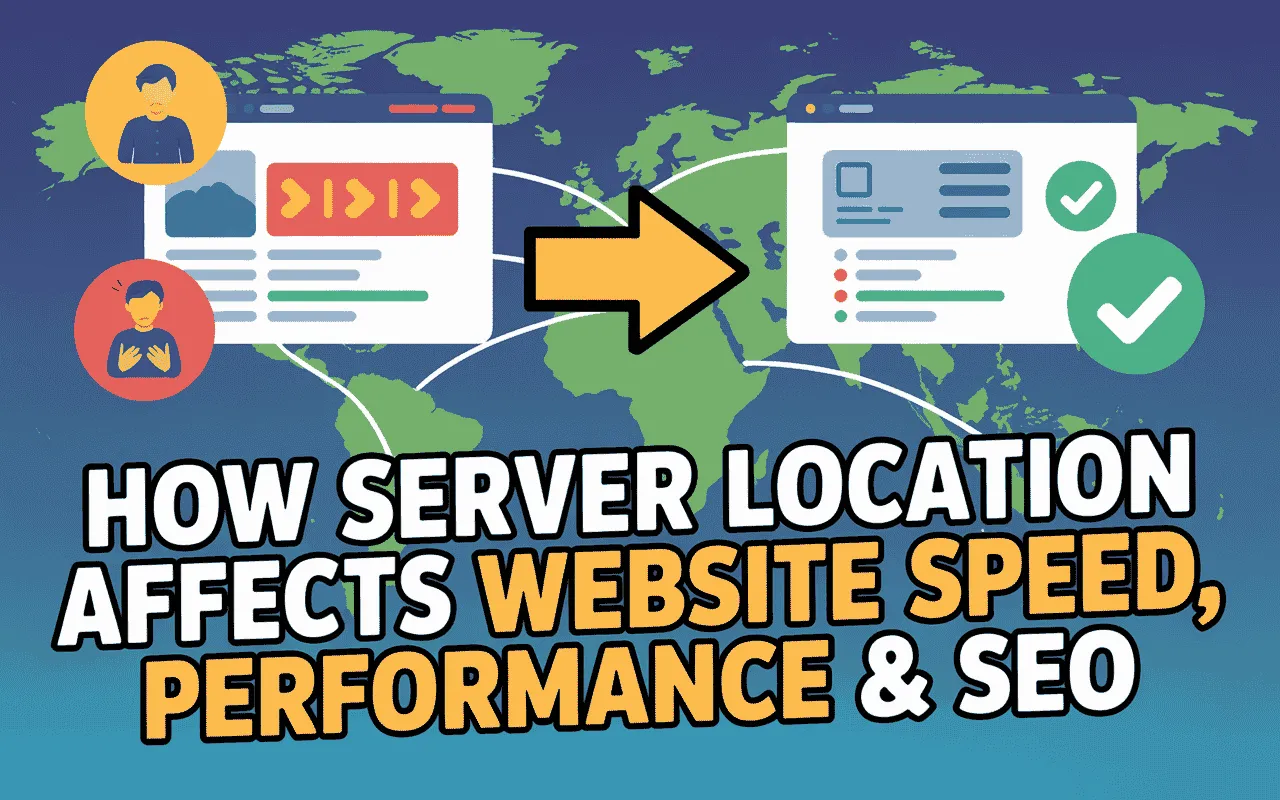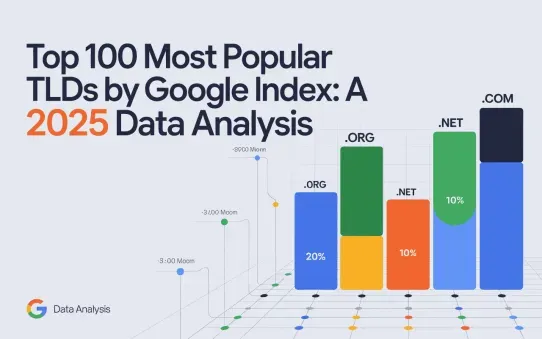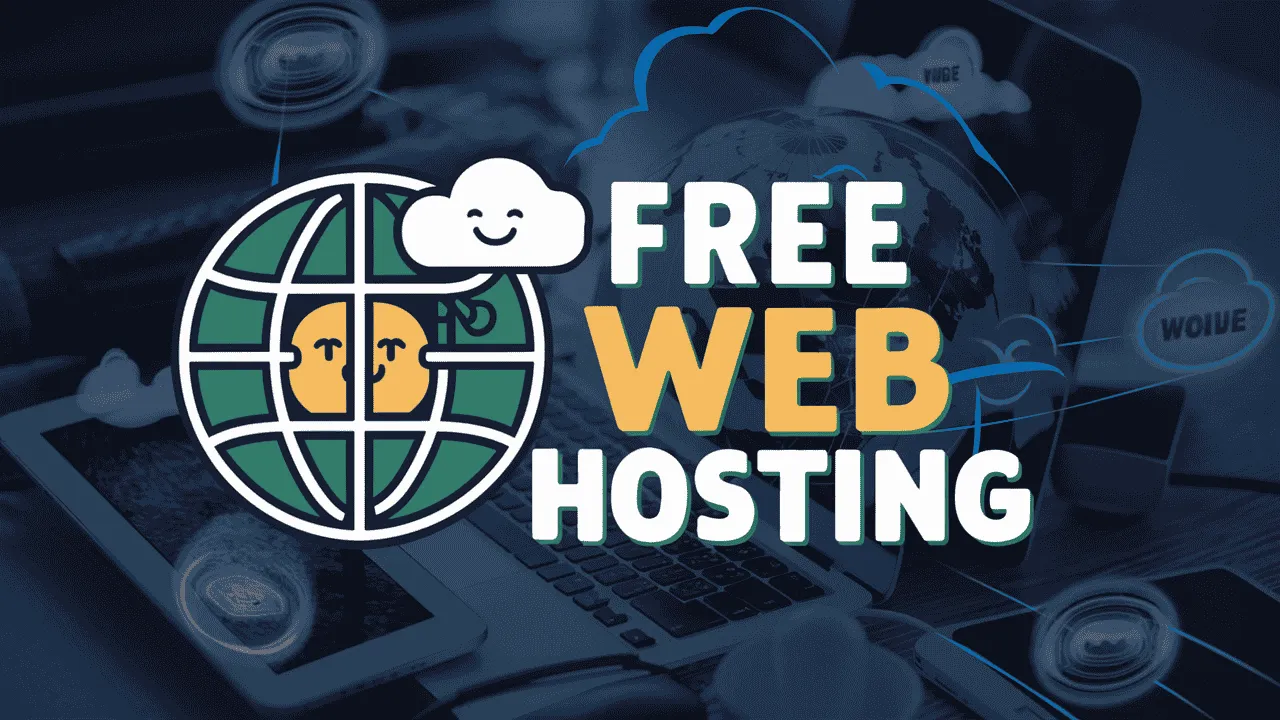In today’s digital world, where user experience matters most, server location plays a big role in a website’s success. As we move into 2025, website owners, developers, and marketers need to understand that server location affects website speed, performance, and SEO. With online competition growing fast, knowing how server location affects website speed and SEO can help your site stand out.
The distance between your visitors and your server directly impacts how fast your site loads. The farther the server, the slower the site — and slow websites make users leave quickly. That’s why server location affects website speed so strongly. It also influences how well CDNs and caching systems work, which are essential for delivering content faster.
At the same time, server location affects SEO. Google considers speed a ranking factor, and a slow site can hurt your visibility. Placing servers closer to your audience improves both speed and user experience, which boosts SEO performance.
At Owrbit, this guide will help you understand how server location affects website speed and server location affects SEO in 2025, with simple tips to make your site faster, stronger, and better ranked in search results.
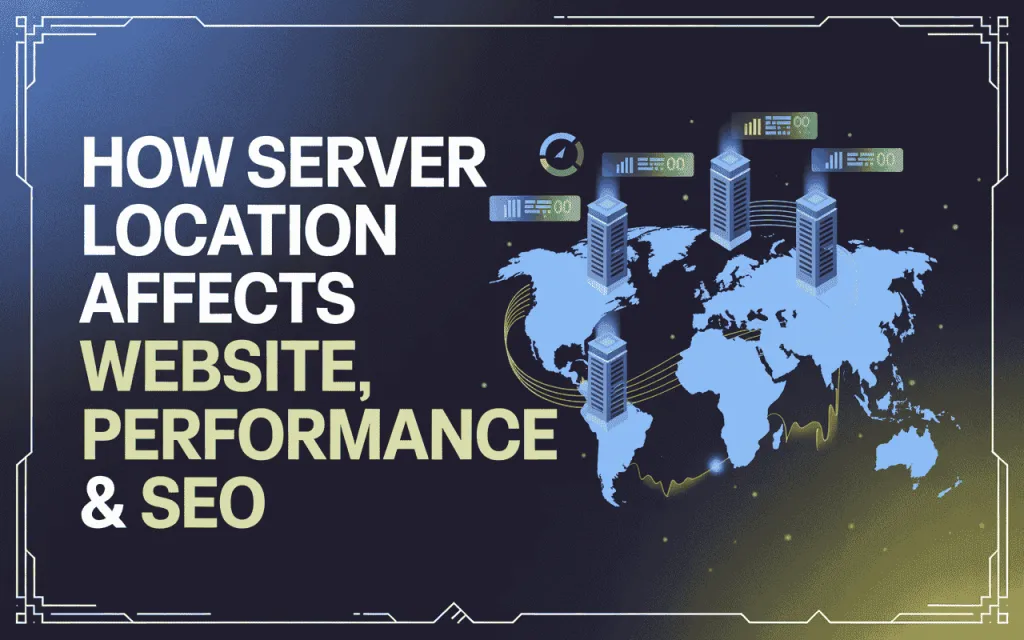
🌎 Introduction to Server Location :
Server location refers to the physical place where your website’s hosting server is stored and operates. It’s the actual geographical location of the data center that holds your website’s files, databases, and applications. The closer this server is to your visitors, the faster your website will load for them.
In simple terms, server location affects website speed because the data has to travel between the user’s device and the server. The shorter the distance, the faster the data transfer — resulting in quicker load times and a better user experience. At the same time, server location affects SEO since search engines like Google consider website speed and user experience as key ranking factors.
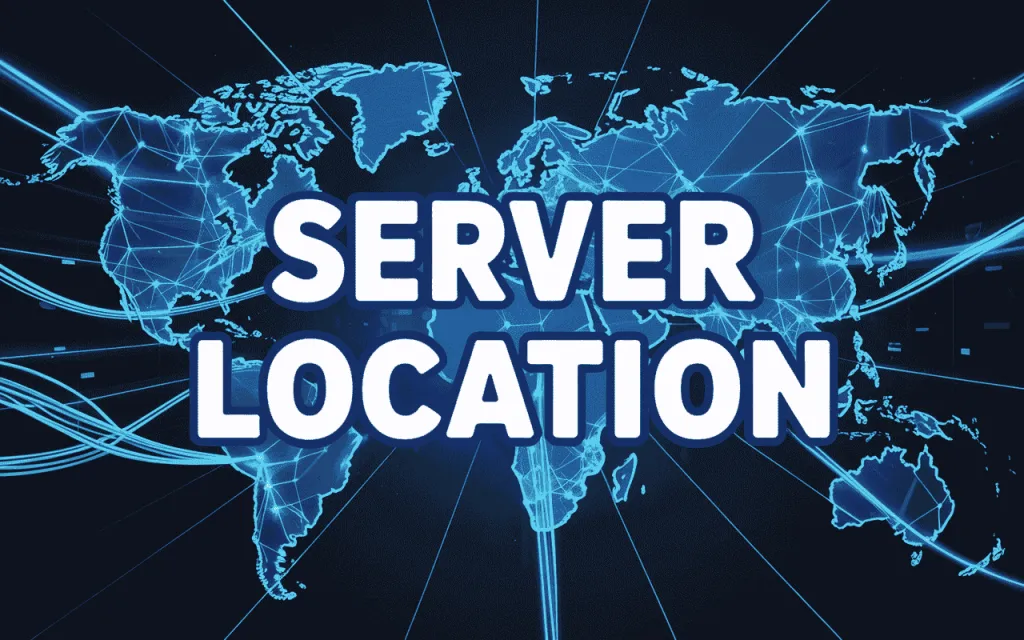
🏢 Overview of Data Centers and Their Geographical Significance
A data center is the building that houses thousands of these servers. Think of it as a high-tech, secure warehouse built specifically for computers.
These facilities are the backbone of the internet and are responsible for storing and managing the data for countless websites, apps, and online services.
The physical location of your server can significantly impact page load times and user experience.
The geographical significance of a data center is critical. These buildings are not built just anywhere. They are strategically placed in locations that have:
- Strong Infrastructure: Access to high-speed fiber optic cables for fast global connectivity.
- Reliable Power: Massive, uninterrupted power supplies (including backup generators and batteries) to ensure servers are online 24/7.
- Advanced Cooling: Powerful air conditioning systems to prevent the thousands of servers from overheating.
- High Security: Both physical (guards, biometric scanners) and digital security to protect the data.
The location of the data center is your server’s location. This physical spot is so important because it determines the distance data must travel to reach your end-users. A shorter distance almost always means a faster website.
⚡ The Importance of Website Speed :
Website speed is one of the most important factors that determine how users experience your website and how well it performs in search rankings. A fast-loading website keeps visitors engaged, improves trust, and helps your brand stand out in a competitive online world.
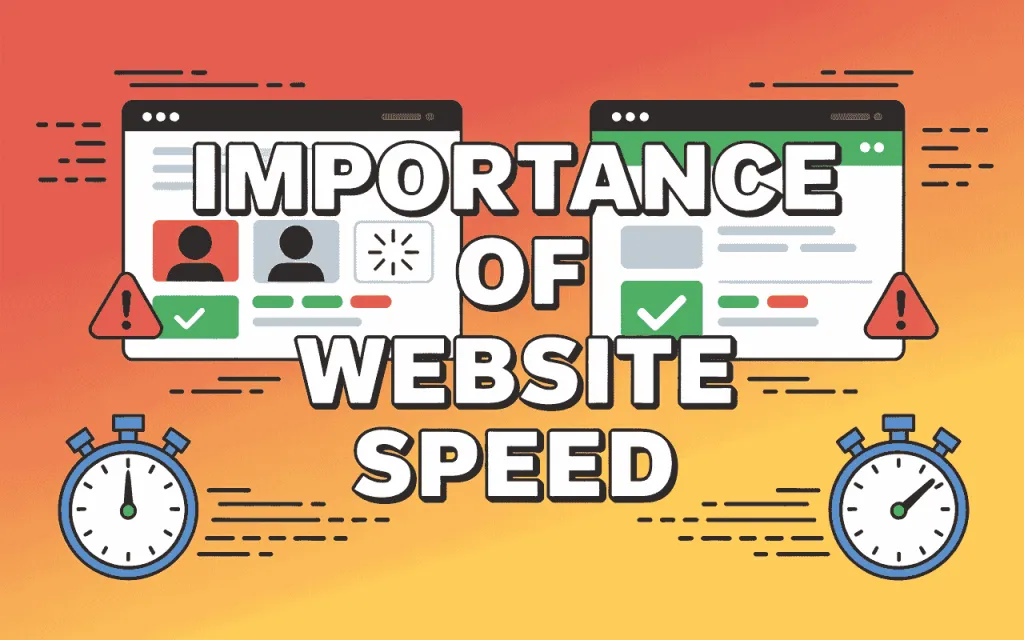
When a website takes too long to load, users often lose patience and leave — which increases bounce rates and reduces engagement. That’s why server location affects website speed in such a big way. The closer your server is to your audience, the faster data travels between them, leading to quicker loading times and smoother browsing.
In addition, server location affects SEO because search engines like Google prioritize websites that load faster and provide a better user experience. So, improving your website speed not only makes visitors happier but also helps your site rank higher and perform better overall.
Understanding how server location affects website speed is critical. For more strategies to improve speed, see our 5 Effective Tips to Improve Website Speed: Ways to Speed Up Your Site
🚀 How Speed Impacts User Experience
Website speed greatly influences how visitors interact with your site. Here’s how:
- Faster Loading Keeps Users Engaged: Quick-loading pages allow users to browse, read, and interact smoothly.
- Slow Websites Increase Bounce Rates: If pages take too long to load, visitors get frustrated and leave.
- Short Attention Spans Matter: Even a delay of a few seconds can make users abandon your site.
- Server Location Affects Speed: The closer your server is to your audience, the faster your website loads.
- Builds Trust and Credibility: Fast websites create a positive impression, encouraging users to stay longer and return.
In short, improving website speed improves user satisfaction, and since server location affects website speed, choosing the right hosting location is key for a great user experience.
Even a 1-second delay in page load time can reduce conversions by 7%.
💰 Correlation Between Speed and Conversion Rates
Website speed doesn’t just affect user experience — it directly impacts your business results. Here’s how speed connects to conversions:
- Faster Websites Boost Conversions: Users are more likely to complete purchases, sign-ups, or other desired actions when pages load quickly.
- Slow Websites Lose Customers: Even a small delay can cause potential customers to abandon carts or leave the site.
- Better Engagement Means Higher Revenue: Quick-loading sites keep users exploring more pages, increasing the chance of conversions.
- Server Location Affects Speed: Placing your server closer to your audience reduces loading times, improving the likelihood of conversions.
- SEO Benefits Support Conversions: Since server location affects SEO through speed, a faster site ranks higher, attracting more potential customers.
In short, faster websites lead to higher conversion rates, and choosing the right server location is a key factor in achieving this.
⏱️ Understanding Latency and Its Effects
In the world of website performance, latency plays a key role in how users experience your site.

📌 What is Latency?
Latency is the time it takes for data to travel from a user’s device to a server and back. It is usually measured in milliseconds (ms) and determines how quickly a website responds to user actions.
High latency can make a website feel slow or unresponsive, even if the server itself is fast. Reducing latency is crucial for improving user experience, website speed, and overall performance. Since server location affects latency, placing your server closer to your audience can make a noticeable difference in how fast your site loads and responds.
Reducing latency improves user experience and boosts SEO. For more detailed strategies, see our Google PageSpeed Insights: Increase Page Speed & Score 100%
📌 How Server Location Affects Latency for Users
The physical location of your server has a direct impact on latency and website performance. Here’s how:
- Closer Servers Reduce Latency: When the server is near your audience, data travels a shorter distance, resulting in faster response times.
- Far Servers Increase Delay: If the server is located far from users, data takes longer to travel, causing slower page loads and a less responsive website.
- Impact on User Experience: High latency can frustrate visitors, increase bounce rates, and lower engagement.
- SEO Implications: Since search engines consider website speed as a ranking factor, server location affects SEO indirectly through latency.
In short, choosing a server close to your target audience minimizes latency, improves website speed, enhances user experience, and supports better SEO performance.
🌐 The Role of Content Delivery Networks (CDNs)
In today’s digital world, delivering content quickly and efficiently is essential for a good user experience.
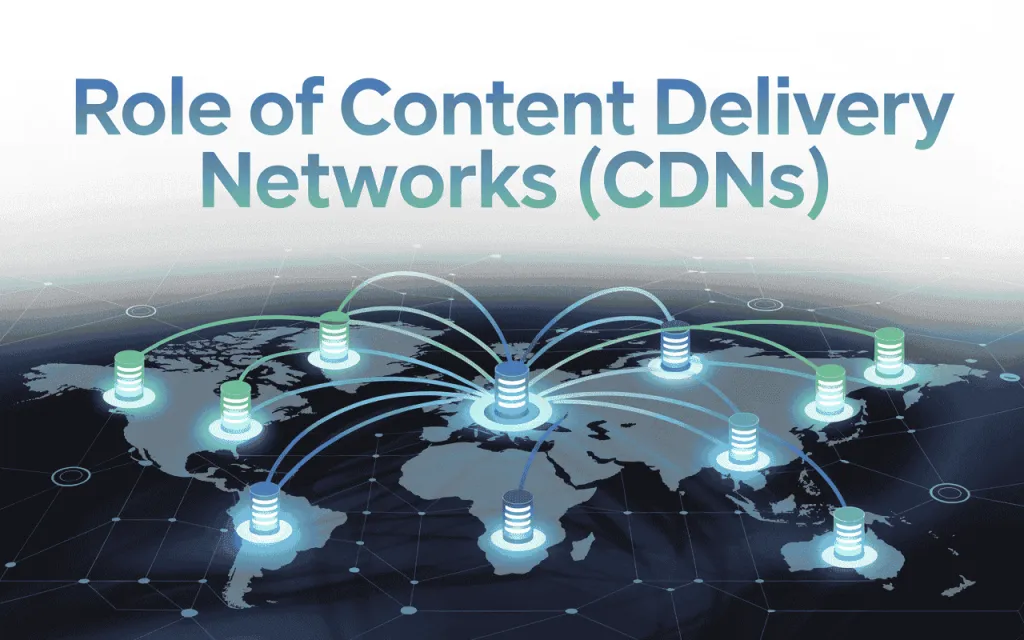
📌 What are CDNs?
Content Delivery Networks (CDNs) are a network of servers located in multiple geographical regions that store cached copies of your website’s content, such as images, videos, and scripts. When a user accesses your website, the CDN delivers this content from the server closest to them, rather than the main server.
This reduces the distance data has to travel, speeds up loading times, lowers latency, and ensures a smoother browsing experience. CDNs are especially useful when your main server is far from your audience, helping improve website speed and overall performance.
Using a CDN helps deliver content faster to users worldwide. Learn more in our Cloudflare vs Bunny CDN: Which CDN Is Perfect For You? 2024
📌 How CDNs Help Mitigate Server Location Issues
CDNs help overcome the challenges caused by distant server locations. Here’s how:
- Faster Content Delivery: CDNs serve website content from the server closest to the user, reducing load times.
- Reduced Latency: Shorter data travel distances mean pages respond more quickly, improving user experience.
- Improved Reliability: If the main server is busy or down, CDN servers can continue delivering content without interruptions.
- Enhanced SEO: Faster-loading websites improve search engine rankings, as speed is a key factor for SEO.
By using a CDN, websites can provide consistent speed and performance to users worldwide, regardless of where the main server is located.
CDNs improve user experience by serving content from the server closest to the user, reducing latency.
📈 Impact of Server Location on SEO
In the world of digital marketing and search engine optimization, every detail counts — and server location is one of those often-overlooked factors that can influence how well your website performs in search rankings. Where your website is hosted affects not only its speed but also how search engines perceive its relevance to users, especially for local searches.
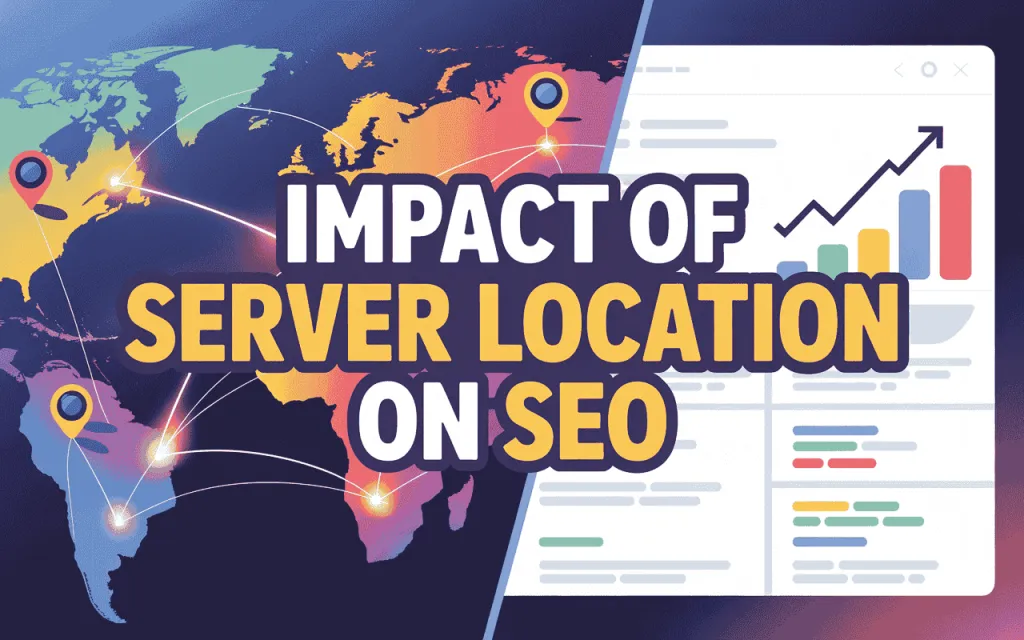
📌 Google’s Stance on Server Location
Google views website speed and user experience as key factors in ranking websites. Since server location affects how quickly your website loads, it indirectly influences SEO performance. A server closer to your target audience can help pages load faster, improving user satisfaction and engagement, which Google rewards in search rankings.
While server location alone doesn’t guarantee higher rankings, it contributes to overall website performance. Fast-loading sites are more likely to retain visitors, reduce bounce rates, and provide a better user experience — all of which are signals that Google considers when evaluating your site.
Page experience, including site speed, is a ranking factor in Google’s algorithm.
📌 How Server Location Influences Local SEO Rankings
Server location can have a significant impact on how your website performs in local search results. Here’s how:
- Faster Access for Local Users: Websites hosted closer to your target audience load quicker, improving user experience and reducing bounce rates.
- Geotargeting Signals: Search engines can consider server location as one of the signals to determine the relevance of your site for local searches.
- Enhanced User Experience: Quick-loading local websites keep visitors engaged, which indirectly supports higher rankings in local search results.
- Supports Other Local SEO Strategies: When combined with localized content, backlinks, and Google My Business optimization, a nearby server strengthens overall local SEO performance.
In short, selecting a server location near your audience helps improve website speed, user experience, and visibility in local search results, giving your site an advantage in reaching the right users.
🌍 Choosing the Right Server Location for Your Audience
Selecting the right server location is crucial for ensuring your website loads quickly, engages users, and ranks well in search engines.
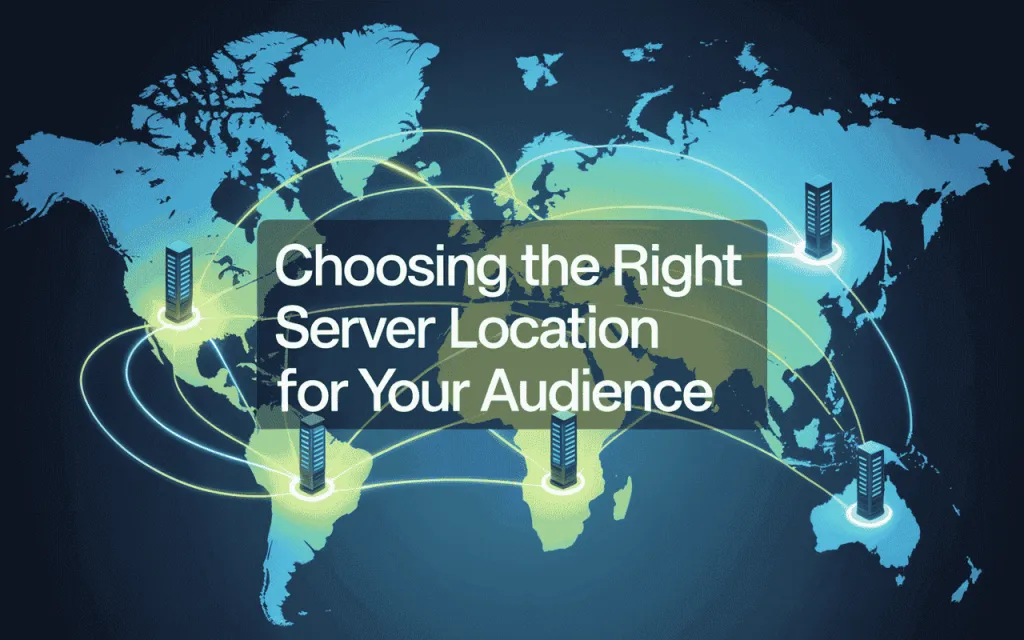
📌 Analyzing Your Target Audience’s Location
Understanding where your website visitors are located is the first step in choosing the right server location. Here’s how to approach it:
- Identify Key Regions: Determine which countries, cities, or regions generate the most traffic to your website.
- Focus on Business Goals: If your services or products target a specific area, prioritize server locations near that audience for faster access.
- Consider Future Growth: If you plan to expand into new markets, factor in those regions when deciding on server placement.
- Monitor Traffic Patterns: Keep track of user behavior to see which areas require better performance.
By analyzing your target audience’s location, you can select a server that reduces load times, enhances user experience, and ensures your website performs well for the people who matter most.
📌 Tools for Assessing Audience Demographics
To choose the best server location, it’s important to understand where your audience is coming from. Here are some tools that can help:
- Google Analytics: Offers detailed reports on visitor locations, traffic sources, and user behavior.
- Google Search Console: Shows the countries and regions where your website appears most in search results.
- SEMrush / Ahrefs: Provides insights into your website’s audience geography and competitive analysis.
- Hotjar: Visualizes user activity on your site, helping you understand where most interactions come from.
- Other Analytics Platforms: Tools like Matomo or Statcounter can also provide geographic and demographic insights.
Using these tools, you can accurately assess your audience’s location and choose a server that improves website speed, user experience, and SEO performance.
📊 Measuring Website Performance Based on Server Location
The location of your server can have a major impact on website performance. Measuring key metrics helps you understand how well your site performs for your target audience and whether server location is affecting speed and user experience.
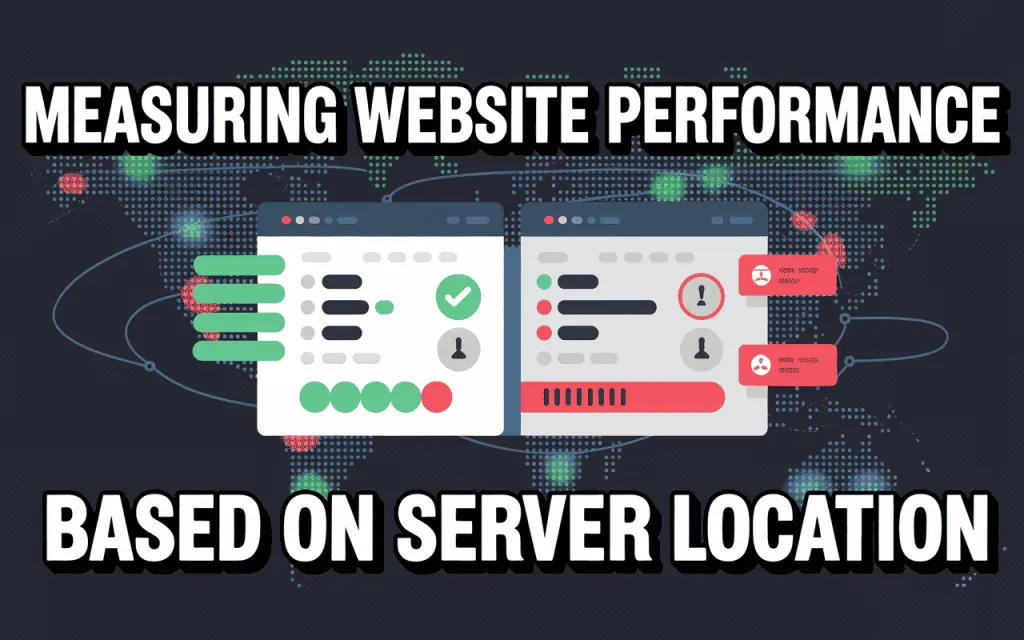
📌 Key Performance Indicators (KPIs) to Track
To understand how server location impacts your website’s performance, it’s important to monitor specific metrics. Key KPIs include:
- Page Load Time: Measures how long it takes for a page to fully display in a user’s browser. Faster load times improve user experience and SEO.
- Time to First Byte (TTFB): The time the server takes to respond to a user’s request. Lower TTFB indicates a faster server response.
- Bounce Rate: The percentage of visitors who leave after viewing only one page. High bounce rates can indicate slow loading or poor performance.
- Conversion Rate: Tracks how many visitors complete desired actions, such as making a purchase or signing up. Faster websites often have higher conversion rates.
- Uptime & Reliability: Measures how consistently your website remains accessible. Frequent downtime negatively affects user experience and SEO.
- Latency: The delay in data traveling between the server and the user. Lower latency improves website responsiveness.
Monitoring these KPIs helps you assess the real impact of server location on website speed, user experience, and overall performance.
📌 Tools for Measuring Website Speed and Performance
To evaluate how your server location affects website performance, you can use a variety of tools designed to track speed, responsiveness, and user experience:
- Google PageSpeed Insights: Analyzes both mobile and desktop performance, providing speed scores and actionable recommendations.
- GTmetrix: Offers detailed performance reports, including page load time, time to first byte (TTFB), and suggestions for improvement.
- Pingdom Tools: Measures website load times from multiple global locations to see how server location impacts performance.
- WebPageTest: Tests site speed, TTFB, and performance metrics from different geographic locations, simulating real user experiences.
- Google Analytics: Monitors user engagement, page load behavior, and bounce rates to identify performance issues.
- Lighthouse (Chrome DevTools): Provides in-depth audits on performance, accessibility, and best practices for your website.
Using these tools allows you to identify speed bottlenecks, understand the impact of server location, and implement optimizations to improve website performance and SEO.
Owrbit Hosting Options: Comparing Server Types, Performance & SEO Impact
Owrbit offers a range of server types designed to meet different performance needs and website goals. Understanding the differences between Dedicated, VPS, Cloud, and Shared hosting can help you choose the best option for speed, reliability, and scalability.
| Server Type | Description | Performance | Best For | Advantages | Limitations |
|---|---|---|---|---|---|
| Dedicated Server | A physical server fully dedicated to a single user or business. | Very high performance with full CPU, RAM, and storage resources. | Large websites, high-traffic portals, enterprise applications. | Full control, maximum speed, high security, customizable hardware/software. | Expensive, requires technical knowledge, management overhead. |
| VPS (Virtual Private Server) | A physical server divided into multiple virtual servers, each with dedicated resources. | High performance, scalable, near-dedicated performance. | Medium to large websites, e-commerce stores, apps needing consistent resources. | Dedicated resources at lower cost than dedicated server, scalable, more control than shared hosting. | Limited by physical server capacity, requires some technical skills. |
| Cloud Hosting | Hosting on a network of interconnected servers that share resources dynamically. | Flexible performance; can scale up or down instantly based on traffic. | Growing websites, high-traffic apps, startups needing flexibility. | Scalable, high uptime, pay-as-you-go pricing, reliable performance. | Slightly complex setup, potential cost increase with high traffic. |
| Shared Hosting | Multiple websites share a single server’s resources. | Moderate; can be slower if other sites consume too many resources. | Small websites, blogs, personal projects, startups. | Affordable, easy to use, beginner-friendly, managed hosting options. | Limited resources, less control, performance can be affected by other sites. |
Choosing the right Owrbit server type based on your website’s traffic, performance needs, and target audience ensures optimal speed, reliability, and SEO performance.
Role of Server Hardware and Network in Website Speed and SEO
The performance of your website isn’t determined by server location alone—server hardware and network infrastructure play a critical role in speed, reliability, and user experience. Here’s how:
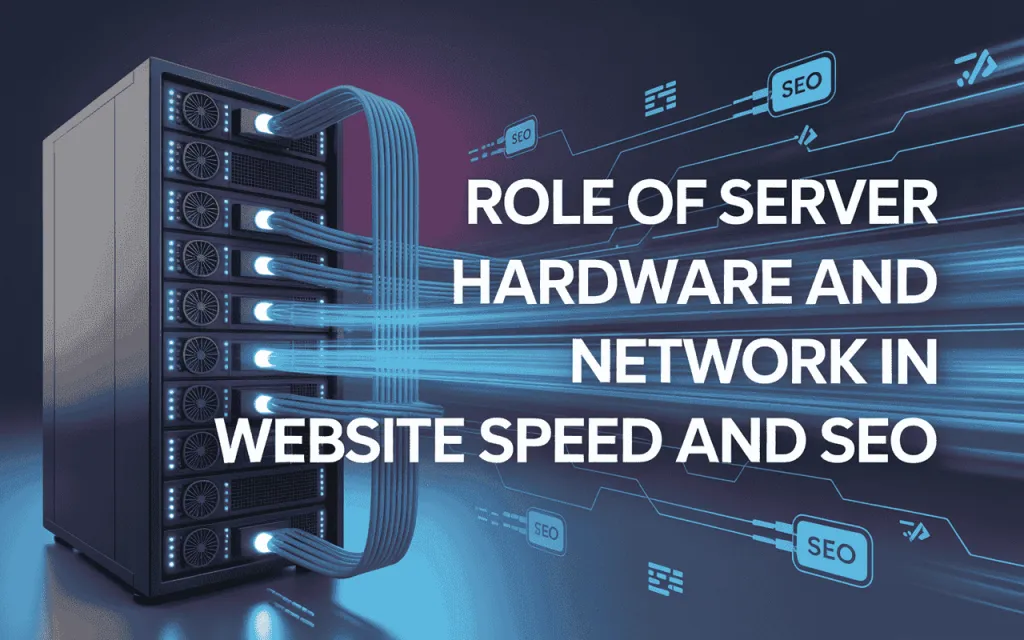
📌 Server Hardware
- CPU (Processor): Determines how quickly your server can process requests. More powerful CPUs handle higher traffic and complex applications efficiently.
- RAM (Memory): Affects the server’s ability to manage multiple tasks simultaneously. More RAM ensures smoother performance for high-traffic websites.
- Storage Type: SSDs (Solid State Drives) are significantly faster than HDDs (Hard Disk Drives), reducing load times and improving overall speed.
- Redundancy & Backup Systems: Hardware with built-in redundancy ensures uptime and protects data in case of failures.
📌 Network Infrastructure
- Bandwidth: Determines how much data your server can transmit at once. Higher bandwidth supports faster delivery of website content, especially during traffic spikes.
- Latency & Routing: Efficient network routing reduces latency and improves load times, especially for distant users.
- Uptime & Reliability: Robust network infrastructure ensures your website remains accessible, minimizing downtime that can hurt SEO and user trust.
- Security & Firewalls: Network security prevents attacks that can slow down or take your website offline.
Even with an ideal server location, poor hardware or weak network infrastructure can bottleneck performance. Choosing powerful hardware and reliable networking is essential for reducing latency, improving website speed, and supporting SEO efforts.
📌 Case Studies: Server Location & Performance Metrics
Understanding how server location impacts website performance is crucial for businesses aiming to enhance user experience and SEO rankings. The following real-world case studies illustrate the significant effects of server placement on website speed and overall performance.
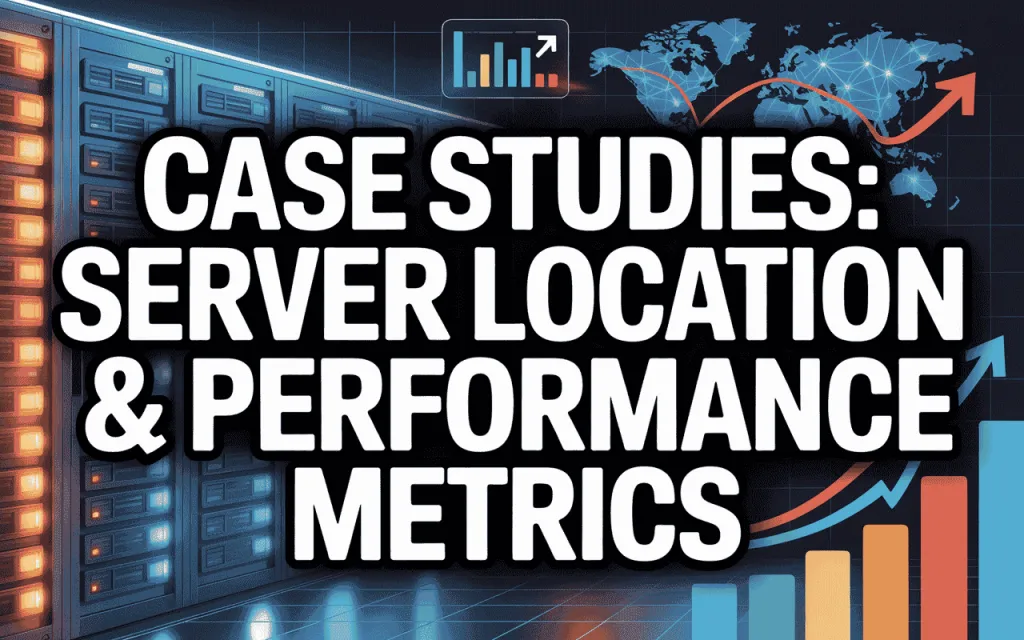
1. E-commerce Website Performance Enhancement
An e-commerce company targeting customers in the United States experienced slower website load times due to their server being located in Europe. After migrating their server to a U.S.-based data center, they observed a significant reduction in latency and improved page load speeds. This change led to a decrease in bounce rates and an increase in conversion rates, demonstrating the importance of aligning server location with the target audience’s geographic location.
2. Local Business SEO Improvement
A local restaurant’s website was hosted on a server located overseas, resulting in slower load times for local users. By relocating their server to a nearby data center, the website’s load time improved, leading to better user engagement. Additionally, search engines recognized the improved performance, contributing to higher local search rankings and increased visibility among potential customers.
3. International News Platform Optimization
An international news platform serving a global audience utilized a Content Delivery Network (CDN) to distribute content across multiple servers worldwide. This strategy reduced latency and ensured faster content delivery to users, regardless of their location. As a result, the platform experienced improved user satisfaction and higher engagement metrics, highlighting the effectiveness of CDNs in mitigating server location issues.
These case studies underscore the significant impact that server location can have on website performance, user experience, and SEO. By strategically selecting server locations that align with your target audience’s geographic distribution, you can enhance website speed, improve search engine rankings, and ultimately drive better business outcomes.
❌ Common Misconceptions About Server Location
Many website owners and businesses have misunderstandings about how server location affects performance and SEO. Let’s clarify the facts:
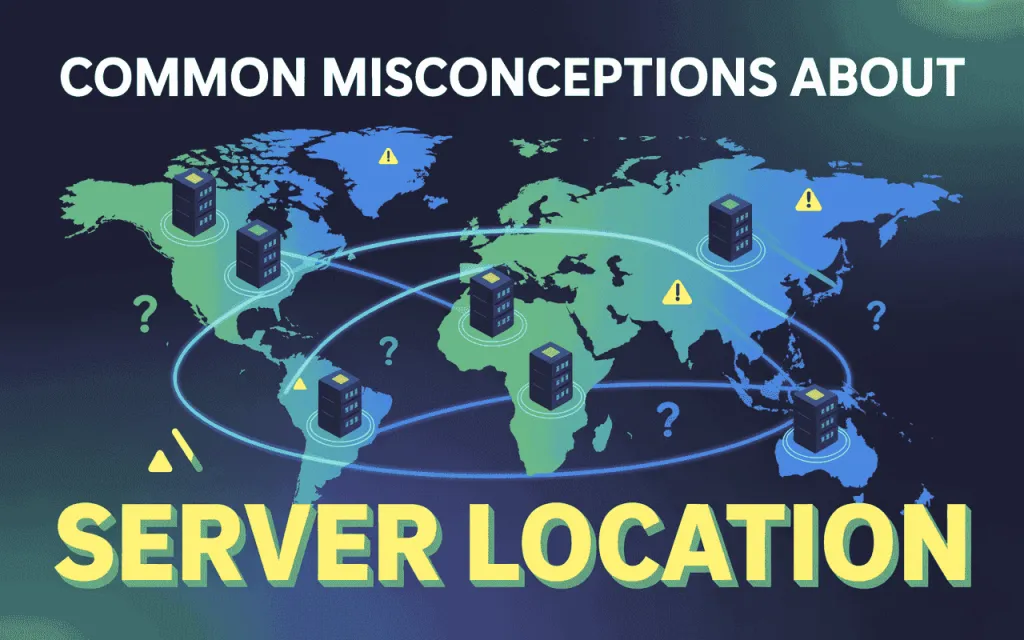
📌 Debunking Myths Around Server Hosting
There are several common myths about server hosting that can mislead website owners. Here’s the truth behind them:
- Myth 1: Server location doesn’t matter anymore – False. Even with CDNs and caching, the physical distance between your server and your audience affects website speed and latency.
- Myth 2: Hosting in another country will automatically hurt SEO – False. Google mainly considers website speed, content relevance, and user experience. Server location alone won’t harm SEO.
- Myth 3: Global hosting is always better than local hosting – False. While global hosting benefits international audiences, local hosting often provides faster load times and better local SEO for region-specific markets.
- Myth 4: Switching servers guarantees instant performance improvement – False. Server performance depends on factors like server hardware, configuration, and network, not just location.
Debunking these myths helps businesses make smarter hosting decisions that improve website speed, user experience, and SEO.
📌 Clarifying the Technical Aspects of Server Location
Understanding the technical side of server location helps you make informed decisions about hosting. Here’s what you need to know:
- Latency and Distance: The farther your server is from your users, the higher the latency. This increases page load times and can affect user experience.
- Impact on SEO: Server location indirectly influences SEO by affecting website speed and responsiveness. Faster websites are favored by search engines and keep visitors engaged longer.
- CDNs Reduce Distance Issues: Content Delivery Networks cache your website content on servers closer to users, mitigating the negative effects of a distant main server.
- Data Regulations: Some countries require that data be stored locally. Choosing the right server location ensures compliance with these regulations.
- Server Performance Factors: Beyond location, server hardware, configuration, and network infrastructure also impact website speed and reliability.
By understanding these technical aspects, you can select a server location that optimizes website performance, enhances user experience, and supports SEO efforts.
🌐 Global vs. Local Hosting: Pros and Cons
Choosing between global and local hosting depends on your target audience, website goals, and performance needs. Here’s a breakdown of the benefits and considerations for each:
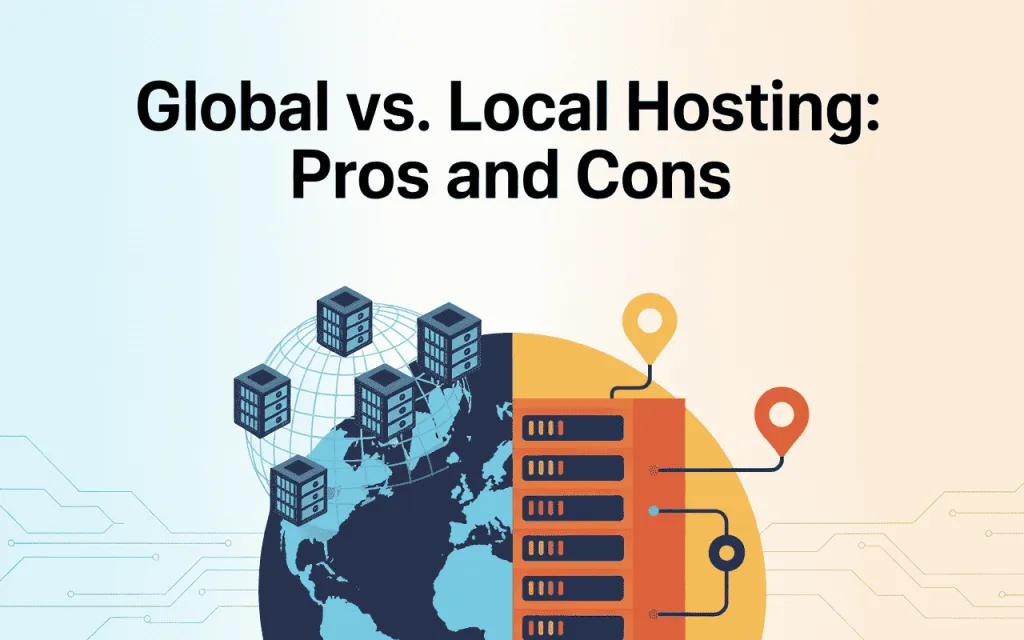
📌 Benefits of Global Hosting
Global hosting refers to using servers or data centers that are spread across multiple countries or regions to serve an international audience. Here are the key benefits:
- Wider Audience Reach: Your website can efficiently serve visitors from different parts of the world without significant delays.
- Scalability: Ideal for businesses planning to expand internationally, as it can handle traffic from multiple regions.
- Integration with CDNs: Global hosting works well with Content Delivery Networks, which cache content on servers closer to users, reducing latency.
- Consistent Performance Across Regions: Users experience relatively fast load times regardless of their geographic location.
- Improved Brand Presence: Hosting globally can enhance trust and credibility with international customers.
Global hosting is best suited for websites that aim to attract and serve users from multiple countries while maintaining speed, reliability, and performance.
Local hosting improves load times for region-specific audiences, while global hosting is better for international reach.
📌 Advantages of Local Hosting for Specific Markets
Local hosting means placing your website’s server close to your primary audience, usually within the same country or region. This approach offers several benefits:
- Faster Load Times: Hosting near your main audience reduces latency, ensuring quicker page loads and a smoother user experience.
- Better Local SEO: Search engines may favor websites hosted locally for region-specific searches, helping improve rankings in local search results.
- Enhanced User Experience: Quick-loading pages keep visitors engaged, reduce bounce rates, and increase the likelihood of conversions.
- Cost-Effective for Regional Businesses: Local hosting can be more affordable while still meeting the performance needs of a specific market.
- Regulatory Compliance: Some countries require data to be stored locally, which local hosting can help satisfy.
Local hosting is ideal for businesses focusing on a specific region, ensuring optimal speed, better SEO for local searches, and a more satisfying user experience for their target audience.
❓ Frequently Asked Questions About Server Location
Choosing the right server location is essential for website speed, user experience, and SEO. The questions below cover the most common queries that website owners and businesses have about how server placement impacts performance, search rankings, and overall site reliability.
Does server location impact SEO rankings?
Yes, server location can influence SEO both directly and indirectly. Search engines like Google consider website speed as a ranking factor, and slower sites may experience higher bounce rates, negatively affecting rankings. Additionally, for local SEO, hosting in a region closer to your target audience can signal relevance to search engines.
Can I change my server location if my audience moves?
Yes, many hosting providers offer flexible server location options. You can migrate your website to a server closer to your new target audience, often with minimal downtime and at no additional cost.
What is Time to First Byte (TTFB), and why is it important?
TTFB measures the time it takes for a user's browser to receive the first byte of data after making a request. A lower TTFB indicates a faster server response, which is crucial for improving website speed and user experience.
How can I measure my website's performance based on server location?
Tools like Google PageSpeed Insights, GTmetrix, Pingdom, and WebPageTest allow you to test your website's speed from different geographic locations. These tools help identify latency issues and areas for improvement.
What role do Content Delivery Networks (CDNs) play in server location?
CDNs distribute your website's content across multiple servers worldwide. By caching content closer to users, CDNs reduce latency and improve load times, mitigating the effects of a distant server.
Does server location affect mobile users differently?
Yes, mobile users often experience higher latency due to varying network conditions. Hosting your server closer to mobile users can enhance their browsing experience by reducing load times.
Are there any legal considerations related to server location?
Yes, different countries have varying data protection and privacy regulations. If your website handles sensitive information, it's essential to choose a server location that complies with applicable laws and regulations.
How does server location impact international SEO?
For websites targeting users in multiple countries, server location can influence load times and user experience. Using a CDN can help ensure optimal performance across different regions, improving international SEO.
Can shared hosting affect performance due to server location?
Yes, shared hosting means multiple websites share the same server resources. If the server is located far from your target audience, combined with shared resources, it can lead to slower performance and higher latency.
Understanding these frequently asked questions helps you make smarter hosting decisions. By selecting the right server location and leveraging tools like CDNs, you can enhance website speed, improve SEO rankings, and provide a seamless experience for your audience, no matter where they are located.
🏁 Conclusion: The Future of Server Location in Digital Strategy
As digital experiences continue to evolve in 2025 and beyond, server location remains a critical factor in website performance, user experience, and SEO. Choosing the right server location can reduce latency, improve page load times, and enhance engagement, ensuring that visitors enjoy fast and responsive websites.
With the rise of global audiences, Content Delivery Networks (CDNs), and advanced hosting technologies, businesses now have more options than ever to optimize performance across regions. While local hosting benefits region-specific markets, global strategies and CDNs allow websites to serve international users efficiently.
In the future, server location will continue to play a key role in digital strategy, influencing not only technical performance but also search engine rankings, user retention, and overall business success. Strategic server placement, combined with performance monitoring and optimization, will be essential for staying competitive in an increasingly connected world.
Discover more from Owrbit
Subscribe to get the latest posts sent to your email.



